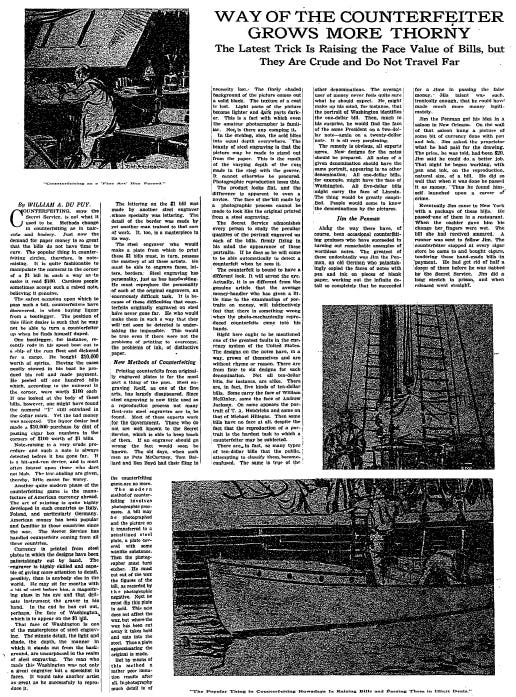Way of the Counterfeiter Grows More Thorny
The Latest Trick Is Raising the Face Value of Bills, but They Are Crude and Do Not Travel Far
During Prohibition, the rise of bootlegging led to a corresponding rise in counterfeit money. An October 1925 New York Times Magazine article detailed the issue.
The journalist William A. Du Puy wrote:
The safest occasion upon which to pass such a bill, counterfeiters have discovered, is when buying liquor from a bootlegger. The position of this illicit dealer is such that he may not be able to turn a counterfeiter up when he finds himself duped.
One bootlegger, for instance, recently rode in his speed boat out to a ship of the rum fleet and dickered for a cargo. He bought $10,000 worth of spirits. Having the cases neatly stowed in his boat, he produced his roll and made payment. He peeled off one hundred bills which, according to the numeral in the corner, were worth $100 each.
If one looked at the body of these bills, however, one might have found the numeral “1” still entwined in the dollar mark. Yet the bad money was accepted. The liquor dealer had made a $10,000 purchase by dint of pasting cigar box numbers in the corners of $100 worth of $1 bills.
In our current era of credit cards, Venmo, PayPal, CashApp, cryptocurrency, and digital payments, the attraction of physical counterfeit money has plummeted.
A February article by Ruth Judson of the Federal Reserve Board estimates the volume of U.S. counterfeit currency at around $15 million, or one in every 80,000 notes. That’s only about one-eighth the level from as recently as 2006, when it was one in every 10,000 notes.
Way of the Counterfeiter Grows More Thorny: The Latest Trick Is Raising the Face Value of Bills, but They Are Crude and Do Not Travel Far
Published: Sunday, October 4, 1925


